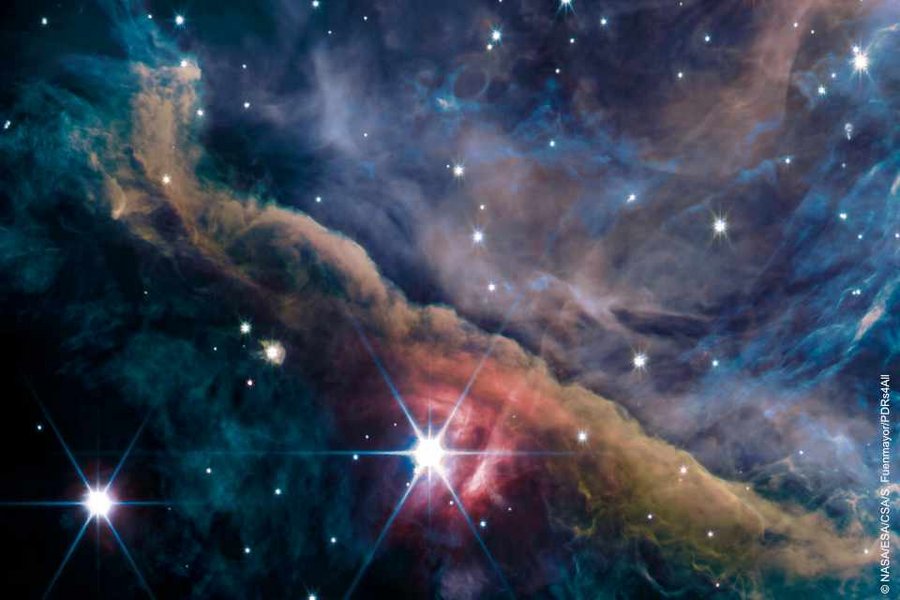
Up to a certain point, very luminous stars can have a positive effect on the formation of planets, but from that point on the radiation they emit can cause the material in protoplanetary discs to disperse.
To find out how planetary systems such as our Solar System form, an international research team including scientists from the University of Cologne studied a stellar nursery, the Orion Nebula, using the James Webb Space Telescope (JWST). By observing a protoplanetary disc named d203-506, they discovered the key role massive stars play in the formation of planetary systems that are less than a million years old. The study, led by Dr Olivier Berné from the National Centre for Scientific Research (CNRS) in Toulouse, was published under the title ‘A far-ultraviolet-driven photoevaporation flow observed in a protoplanetary disk’ in Science.
These stars, which are around ten times more massive, and, more importantly, 100,000 times more luminous than the Sun, expose any planets forming in such systems nearby to very intense ultraviolet radiation. https://portal.uni-koeln.de/en/universitaet/aktuell/press-releases/single-news/ultraviolet-radiation-from-massive-stars-shapes-planetary-systems







Recent Comments